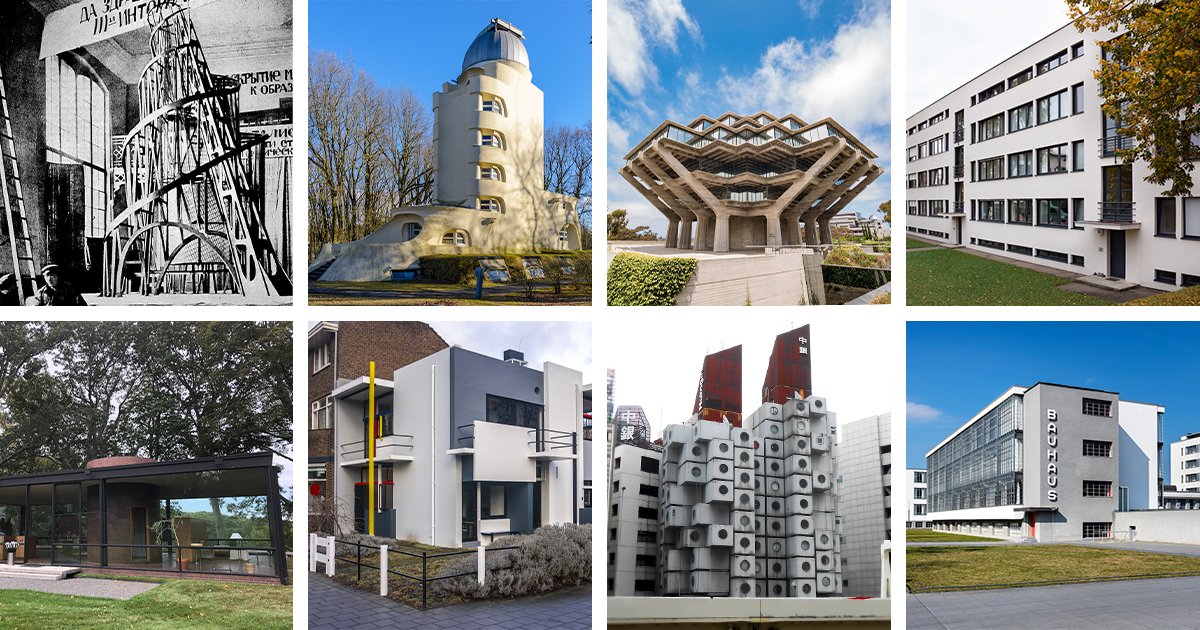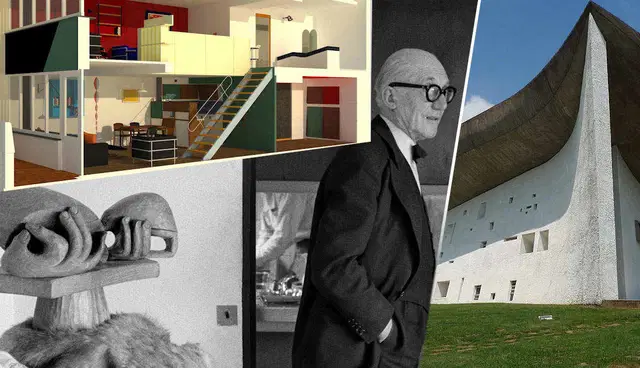One of the most important movements in design history is modernist architecture. It started in the early 1900s and was a break from the opulent, decorative styles of the Victorian and Gothic periods. Modernism was all on new building technology, functionality, and simplicity. Louis Sullivan’s famous saying “form follows function” sums it well.
Architects had more latitude than ever before to design buildings that were simple, full of light, and useful because steel, reinforced concrete, and enormous sheets of glass became more popular. Modernist ideas swept across continents and had an effect on every part of the built environment, from elegant skyscrapers to flowing organic shapes.
Origins & Philosophical Foundation
Modernist architecture came about because of changes in society, culture, and technology in the early 1900s. Architects had to reconsider old styles because of industrialisation, urbanisation, and the demand for mass housing. The idea of being honest about materials and how they work became very important: no more superfluous decoration, just structural reality.
- Louis Sullivan (1856–1924), who is generally labelled the “father of modernism,” came up with the idea that “form follows function.” His Chicago skyscrapers made it possible for rational, vertical architecture.
- Walter Gropius started the Bauhaus school in 1919 with the goal of combining art, craft, and industry. Bauhaus designers focused on clean lines, useful furniture, and geometric shapes. These ideas are still relevant today.
Modernism basically said no to too much decoration and made architecture a way to make society better. It fit in with larger cultural values of efficiency and modern life by putting light, space, and people’s health first.

Core Movements of Modernism
International Style
The International Style (1920s–1930s) was probably the most important part of modernism. It extended across Europe and America and was known for its flat roofs, straight lines, open floor plans, and glass fronts.
- Le Corbusier changed the way houses were designed with designs like Villa Savoye in France, which focused on light, open spaces, and pilotis (columns). His ideas for cities, including the Radiant City, changed planning discussions all across the world.
- Ludwig Mies van der Rohe applied modernism to skyscrapers and came up with the saying “less is more.” His Seagram Building in New York is still a minimalist work of art made of steel and glass.
Organic & Prairie-Influenced Modernism
Frank Lloyd Wright produced a more organic modernism, which is different from stark minimalism. His Fallingwater (1935), which was built dramatically above a cascade, combined architecture with nature. The Guggenheim Museum in New York used flowing, spiral shapes that went against the rules of how buildings should be built.
Midcentury Modern
Modernism changed into the Midcentury Modern style between the 1940s and 1960s. It became known as the style of fashionable suburban homes in America because of its big windows, natural wood, open-plan interiors, and living spaces that connect the inside and outside. Its influence on interior design is still strong today.
Metabolism & High-Tech
- Metabolism was a Japanese concept after World War II that saw buildings as living, changing things. The Nakagin Capsule Tower in Tokyo (1972) showed shown modular, replaceable housing components.
- High-tech architecture from the 1970s focused on structures that were open to the outside, mechanical systems, and futuristic looks. The Centre Pompidou in Paris, designed by Renzo Piano and Richard Rogers, is famous for having pipes, ducts, and escalators on the outside. It changed the way people think about cultural architecture.

Transition and Reaction: Postmodernism
Critics said that modernism was too rigid, antiseptic, and detached from cultural symbols, even though it was a big step forward. This led to the rise of Postmodernism in the late 20th century.
- Architects like Michael Graves and Robert Venturi brought back decorative elements, historical references, and bright colours. Venturi famously declared, “Less is a bore,” which went against Mies’s philosophy.
- Postmodern structures moved away from modernism’s purity and embraced complexity, irony, and eclecticism.
Even as postmodernism became more popular, the modernist ideas of minimalism, rational organisation, and using new materials still had a big impact.

Legacy & Notable Figures
There is no denying the legacy of modernist architecture. Its ideas changed the way cities looked, how people lived in large groups, and famous cultural figures. Some architects are well-known for making lasting changes:
- Oscar Niemeyer from Brazil converted concrete into beautiful sculptures with his sensual, bending buildings like Brasília’s National Congress.
- Alvar Aalto (Finland): He combined functional modernism with humanity to make spaces that were warm and natural.
- M. Pei (China/USA): The Louvre Pyramid merged modern minimalism with historical context, and the Bank of China Tower in Hong Kong showed off daring engineering.
- Sir Denys Lasdun (UK): He was a leader in brutalist modernism with buildings like London’s National Theatre.
Modernist ideas still have an impact on modern architecture, whether it’s minimalist homes, eco-friendly skyscrapers, or digital design.
Conclusion
Modernist architecture wasn’t only a style; it represented a change in culture. It came about because of advancement in industry and society’s requirements. Instead of using historical ornamentation, it promoted simplicity, new ideas, and usefulness. Its many styles, from the elegant International Style to organic and high-tech designs, changed how people live, work, and use space.
Postmodernism later challenged modernism, yet its spirit of experimentation and clarity still inspires architects today. Modernism is still important in the 21st century, as shown in glass towers and eco-friendly homes.
For more content like this CLICK HERE
References
(PDF) A Critical History of Architectural Modernism
Modernist Architecture: A Perfect Fusion of Form and Functionality





